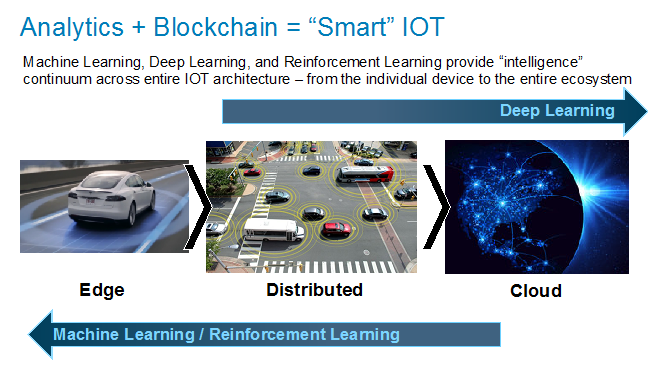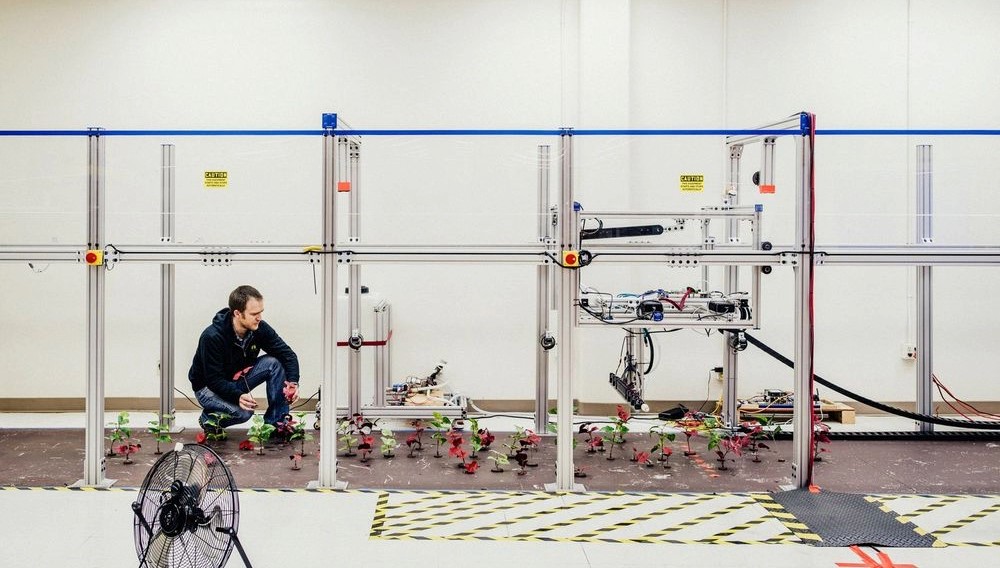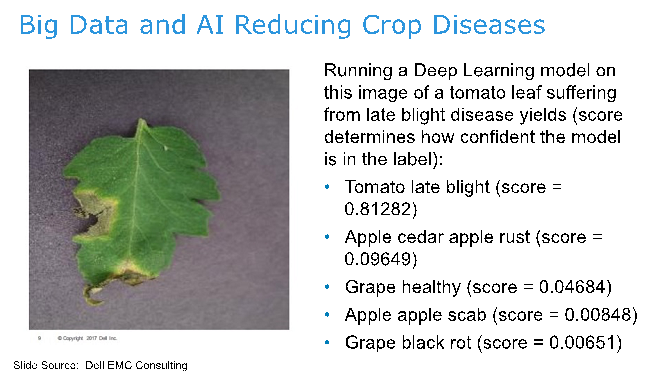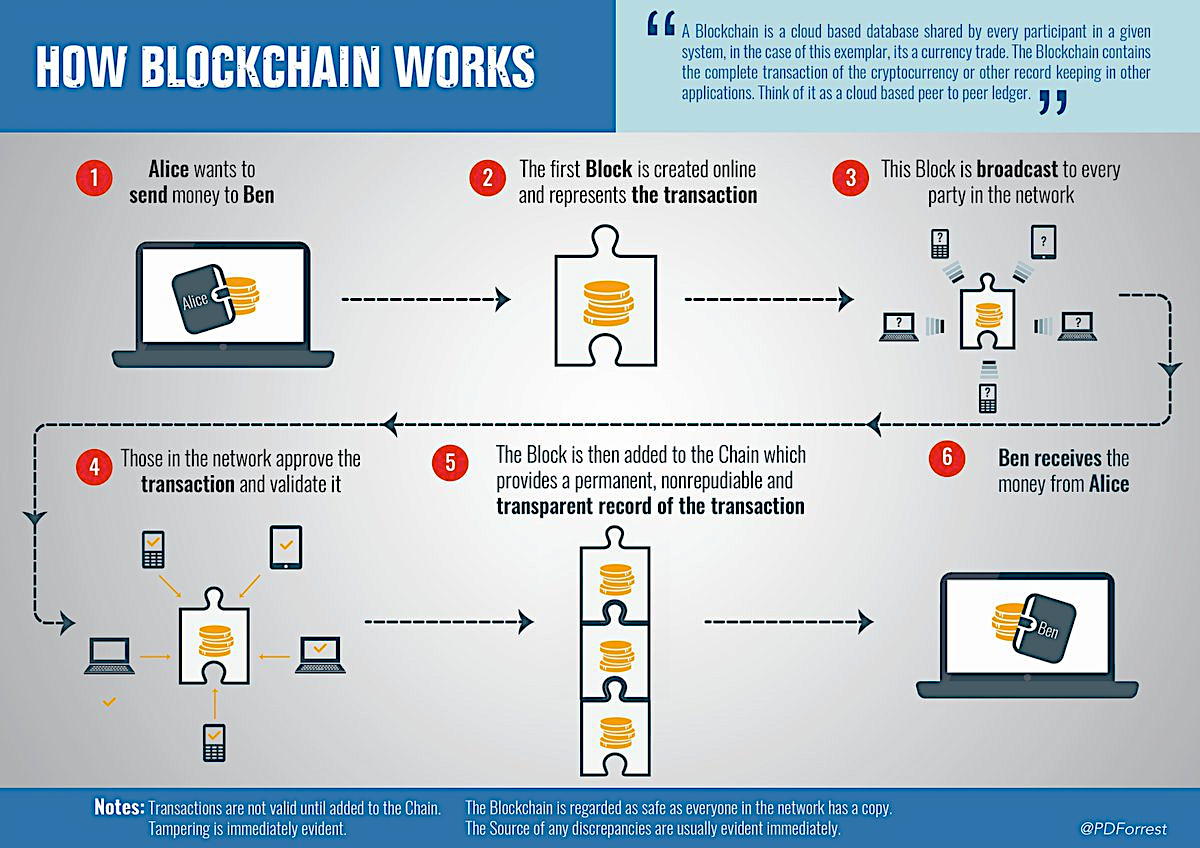
Autonomous cars are racing down the highway at speeds exceeding 100 MPH when suddenly a car a half-mile ahead blows out a tire sending dangerous debris across 3 lanes of traffic. Instead of relying upon sending this urgent, time-critical distress information to the world via the cloud, the cars on that particular section of the highway use peer-to-peer, immutable communications to inform all vehicles in the area of the danger so that they can slow down and move to unobstructed lanes (while also sending a message to the nearest highway maintenance robots to remove the debris).

Real-time analytics at the edges of the Internet of Things and the real-time communications between devices of different types, models and makes are going to be critical to realizing the operational and society benefits of smart cities, smart airports, smart hospitals, smart factories and the like.
While machine learning and reinforcement learning at the edges and deep learning at the core are key to driving system-wide intelligence, the ability to capture, communicate, share and build upon the system-wide “learnings and insights” at the “local level” is going to require a technology that exploits real-time, nearest neighbor, peer-to-peer, immutable communications. Hello, Blockchain!

While there are many interesting aspects of Blockchain, the two that I find the most compelling for creating “smart” environments are:
- Peer-to-peer, which is the ability to share access to data and information (analytics) without the need for a central server
- Immutable communications, which is that the data and information is not susceptible to change.
Define Blockchain
A blockchain is a distributed file system in which blocks of information are linked together (“chained”) and secured using private key cryptography, ensuring only those with appropriate permission can edit the data. Because copies of the file are stored on multiple computer systems (distributed) and kept synchronized through the consensus of the network, they enable innovative solutions to problems involving tracking and ledgering transactions in a digital world.
Bottom-line is that blockchain enables low-cost, peer-to-peer communications without the added expense (and latency) of a cloud infrastructure.
Precision Agriculture Use Case
A recent BusinessWeek article titled “This Army of AI Robots Will Feed the World” discusses the implications of micro-robots in the application of plant-by-plant farming. From the article:
“The implication of plant-by-plant—rather than field-by-field—farming is not just the prospect of vast reductions in chemical usage. It could also, in theory, end mono-cropping, which has become the new normal—cornfields and soybean fields as far as the eye can see—and has given rise to the kind of high-calorie, low-nutrient diets that are causing heart disease, obesity, and Type 2 diabetes. Mono-crops also leach soil nutrients and put food supplies at risk, because single-crop fields are more susceptible to blight and catastrophe. Modern farmers have been segregating crops in part because our equipment can’t handle more complexity. Robots that can tend plants individually could support intercropping—planting corn in with complementary crops such as soybeans and other legumes.”

As these micro-robots roll down the fields applying deep learning algorithms to make snap decisions about what pesticides and/or herbicides to use, and how much to use on an individual plant by plant basis, blockchain will play a critical role in ensuring communications between the micro-robots and the other farm implements of different types, models and manufacturers about the learnings or insights that are being gathered in real-time about crop health, damage and disease, including:
- Is there a pattern to the pesticide and herbicide needs of the plants?
- Do certain types of plants require more than normal pesticides and herbicides?
- Are there any potential pesticide or herbicide “drift” problems that are having unexpected impact on neighboring plants?
- Are there certain portions of the field where more or less crop damage is prevalent?
- Which pesticides and herbicides seem to be delivering the best results?
These kinds of real-time insights can help the micro-robots to optimize the plant-by-plant treatments to drive optimal crop yield at minimal costs.

Role of Analytic Profiles or Digital Twins
What I find most interesting from a Big Data and Data Science perspective is the ability to build analytic profiles at the level of each individual plants. The micro-robots applying pesticides and herbicides can capture detailed performance and behavioral insights at the level of each individual plant. These performance and behavioral plant, pesticide and herbicide insights can be aggregated to provide substantial financial, operational and ecological benefits such as:
- Reduced use and overuse of pesticides and herbicides
- Improved predictability in crop yield
- Improved predictability in ideal harvesting time
- Reduce crops lost to disease and distress
- Optimize the mix of crops on a field-by-field basis
- Reduce the time and effort required to care for a field
- Save a whole bunch of money!
See the blog “Analytic Profiles: Key to Data Monetization” for more details on the Analytic Profiles concept.
Blockchain + Analytics has the potential to convert almost any environment (airports, train stations, malls, highways, schools, hospitals, factories, stores) into a “smart” environment where the learnings and insights from normal operations can be quickly and securely shared with “neighboring” devices to create a self-learning, self-correcting and self-adjusting environment. Now, that’s smart!

